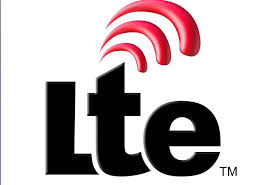
A major milestone in the checkered history of mobile broadcast has been reached with a demonstration at the US Super Bowl, one of the country’s biggest and most iconic sporting events. For years mobile broadcast has stuttered, let down by poor business models, the cost of infrastructure and lack of support on consumer devices. While all of these remain hurdles, the latest version of the technology, LTE Broadcast, does really look as if at last it is going to prevail over them. It is ironic that the first LTE Broadcast transmission over a commercial LTE network by Australian operator Telstra in October 2013 almost coincided with the closure of the one of the last services based on the earlier DVB-H technology that was once widely viewed as opening the era of mobile broadcast. The fact that did not happen was not really a reflection of DVB-H itself but more the costs associated with its deployment and fact that devices did not support it.
While talk of successful business models and monetization is still premature, two big related factors have changed in favour of mobile broadcast. These are the arrival of tablets and larger smartphones as attractive and capable viewing devices, which in turn is driving up mobile data traffic at almost exponential rates. Much of that traffic soaking up backhaul bandwidth and RAN (Radio Access Network) spectrum is unicast video. Yet a lot of that at certain peak times is live streaming video that is consumed by many people at a given time. If it could be multicast, then only one instance of that video would need to be transmitted across a given backhaul link and RAN cell. The potential for cost saving as well as improved QoS is immense.
Events like Super Bowl are precisely what we mean here, since there are large numbers of people in one place, many of whom would love to snack relevant video on their mobile handsets such as action replays, or associated data like player stats. Verizon’s Super Bowl experiment is not full scale as it does not involve general user handsets. It will not yet indicate what impact the technology has on end to end network performance and congestion. But it is a good proof of concept that will be followed by larger experiments when wider handset support is available.
In fact the Verizon Wireless live demo, running over five days at Bryant Park in New York, involves streaming of live NFL (National Football League) content to dedicated tablets in the facility called "Verizon Power House" set up in Bryant Park using LTE Broadcast technology provided by chip maker Sequans. The tablets are running Sequans' eMBMS-capable Mont Blanc LTE platform and issued to visitors try out the LTE streaming prior to and during the event.
While this was going on, European operators such as EE and Orange France have been carrying out small-scale trials of LTE Broadcast technology, having in the past tried out DVB-H. They now believe, like Verizon, that the initial motivation for LTE Broadcast will be to optimize capacity and improve service quality for customers in crowded areas. But as Verizon has noted, availability of mobile broadcast in such crowded areas will at the very least help gain and retain customers, with business opportunities such as location based advertising quickly following.
The other key thing is that LTE Broadcast has unwavering support from key industry players like Ericsson and Alcatel-Lucent, as well as those like Qualcomm that got their fingers burned earlier on with mobile broadcast. We are now looking at handset availability and the first operational services sometime in 2015.
We’ll be talking to Alcatel Lucent in part five of this series, stay tuned.
Part 3 of this series is here.

[…] the time of the launch. For the Super Bowl demo, which we first reviewed as it was happening in the fourth blog in this series, Verizon Wireless used two handsets that are already LTE Broadcast capable. One was Verizon’s own […]
[…] Broadcast will be a great success. Part one in the series by Philip Hunter is here, part two is here and part four is here. […]